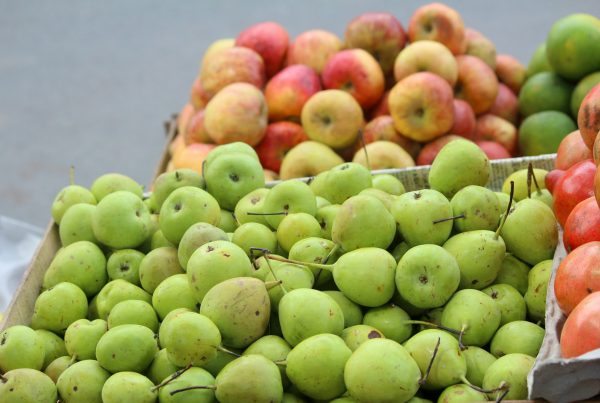Newsletter 151 – 06.08.2023
Fruits and healt are like synonymous . After the shock of the pandemic, the population turned towards a healthier life and, according to the surveys carried out, today people tend to live and eat in a healthier way. But if we look at fruit consumption, this is not reflected. Fruit consumption continues with the downward trend of the last decade. A few years ago, consumption in Argentina was one fruit per day per person; but we are currently at barely half a fruit. This poses a dilemma: consumers consider themselves healthier, but consume less fruit. To try to understand this we will analyze different aspects.
A recent survey reflects that most people consider that they eatenough fruit. They comment that they try to eat 1 fruit a day and with that they "comply" with their health. The recommendation of 5 servings of fruits or vegetables per day is quite far from this. Therefore, the first problem is that there is no awareness that consumption is insufficient.
Those consulted relate healthy eating to other foods. For example, they state that they consume less flour, meat and sweets and have incorporated legumes and nuts. When inquiring about fruits, the benefits of avocados and blueberries stand out. Years of advertising campaigns and promotions on social networks catapulted these fruits to success, and even pediatricians recommend them. But this does not happen with other "common" ones. Fruits are known to be healthy, but the habit of consumption has been lost. The expression “one apple a day, keeps the doctor away” fell into oblivion. A similar situation occurs with citrus fruits, frequently indicating a vitamin C supplement, instead of a glass of squeezed orange juice. Here, we find the second conflicting point, which is comfort. It's easier to pour an effervescent tablet into a glass than to squeeze an orange. It is easier to eat a packet of cookies or yogurt than to peel an apple. Added to this is the fact that people consider that eating a banana on a subway is not very good manners, but there is no problem with a cookie. Socially, the consumption of fruit on public is not well seen. To this is added that the trend of the food industry during the last 20 years was towards sweeter foods. The result is a very serious obesity problem and people are used to a higher degree of sweetness than fruit usually has. How can you convince a child that an apple is delicious, after eating flan with dulce de leche? And to all this is added the food industry advertising. Large companies that manufacture snacks, candies, soft drinks, dairy products, etc. have a generous budget for advertising campaigns. This is impossible for the fruit sector, which is mainly made up of small to medium-sized companies.
Another factor that begins to play against the consumption of fruit is the costs. Currently the fruit is not an economic food. This fact clashes with the perception of the public that considers that it is a natural product, that it does not have further processing, for which reason it should be economical. There is a total ignorance of the effort and costs involved in bringing top quality fruit to retailers. Modern fruit growing requires an expensive technological package to ensure quality production every year. Climate change forces an increase in investment, since extreme weather events have become commonplace. Therefore, anti-frost controls, supplementary irrigation, nets against hail and rain, covered by the sun, etc. are required. With a trend towards higher temperatures and alternating drought with excess water, the health situation of the crops also worsened. Pests and diseases that did not appear before begin to invade the plantations. If we add that, on the other hand, the use of certain chemical products is restricted, the situation is extremely complex and commonly leads to higher costs to carry out controls.
Another fact that increased the cost of production was the greater use of certifications and seals. Today a common practice, demanded by many buyers, which means improving the entire production process, making more controls and paying for certifications. All this results in higher costs, which in the end are charged to the price of the fruit. As a consequence, the fruit is an expensive food for the population that lives in an inflationary context and a fall in its purchasing power.
Government entities and NGOs began to make efforts to stop the fall in fruit consumption. Poor nutrition and its consequences on health have high costs for society and the state. Let's hope that over time these efforts will have positive results and the current trend will be reversed.







